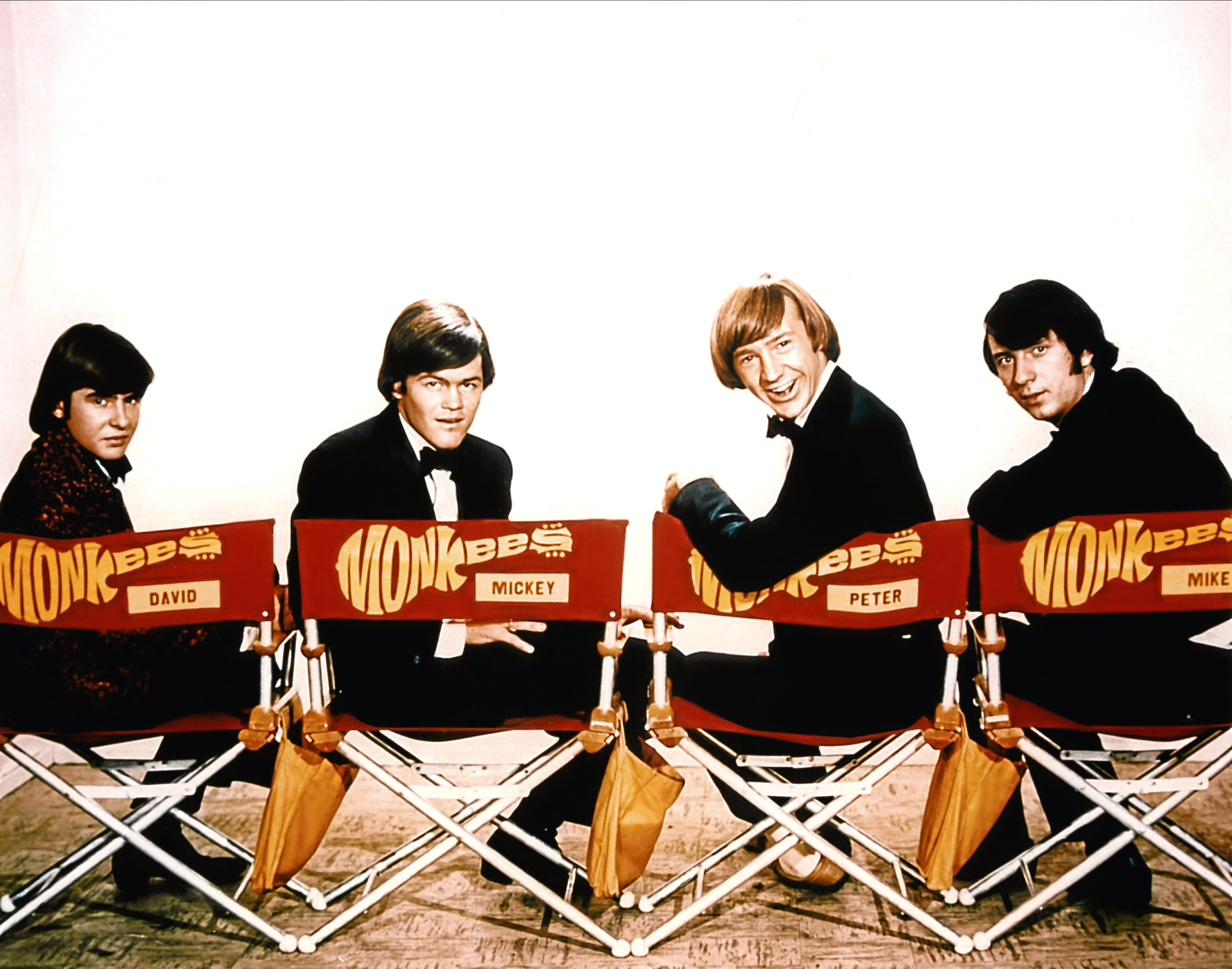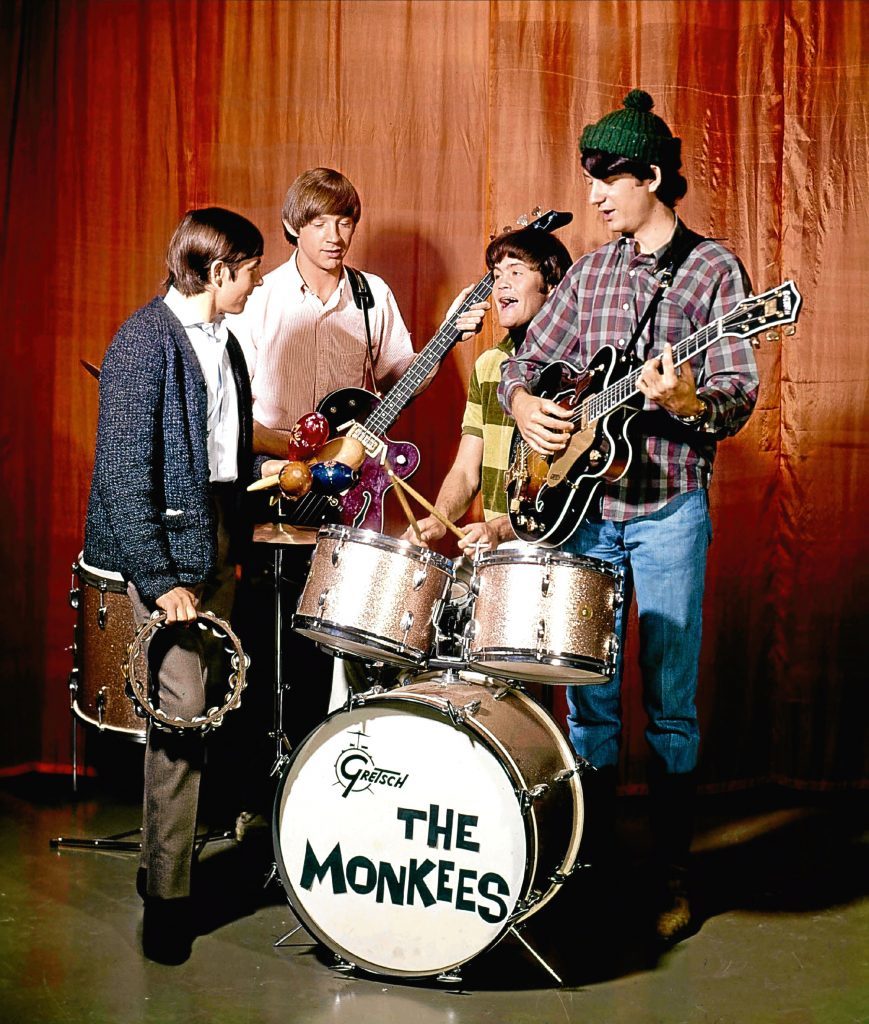
MONDAY, September 12 is a big date for Monkees fans — it’s exactly half a century since their heroes’ TV show was first aired.
Back in 1966, the four lads who starred in the brand-new show were just relieved to be on our screens, having seen off hundreds of applicants.
TV show creators Bert Schneider and Bob Rafelson had placed an advertisement in a showbiz magazine looking for “folk and rock musicians” to star in a comedy centred around a struggling group.
The basic premise would be based loosely on such movies as The Beatles’ A Hard Day’s Night, and more than 400 applied for the job, including Stephen Stills, of future Crosby, Stills, Nash and Young fame, and Harry Nilsson.
Davy Jones was the first to be cast as a Monkee, and the Englishman joined as lead singer and percussionist.
Californian Micky Dolenz was next, on drums, with Peter Tork from Washington DC on bass and guitar. The band was completed with another guitarist, Texan Mike Nesmith.
Nobody cared whether they were really talented musicians or not, and this attitude would lead to major hassles!
The Monkees’ music was to be handled by Don Kirshner, a New York music publisher known as The Man With The Golden Ear because he could tell a hit before anyone else.
From The Archies to Helen Reddy, Olivia Newton-John to Kansas, musicians and singers trusted him, and the TV show makers left him to take care of The Monkees songs, too.
This was why the first thing Kirshner did was to insist the four lads would not be allowed to take any part in recording, except for a bit of singing.
Nesmith put his foot down, and managed to get his own, very good, songs included.
Kirshner, however, stressed there was no need for them to play instruments.
Decent players, The Monkees weren’t pleased.
To be fair, Kirshner had songwriters at his disposal, such as Carole King and Neil Diamond, Neil Sedaka and Bobby Hart, who could also play their own instruments.
The main thing was that The Monkees clicked in front of the cameras, gathered a large fan base and became the most-talked-about group.
Before long, they had huge numbers of devoted fans, a brilliant debut single, Last Train To Clarksville, going straight to No 1, followed by their album, The Monkees, hitting top spot.
The TV show to go with all this was a smash hit, and everything in the garden should have been rosy.
Trouble was, the media were already muttering darkly about the band.
Who were these guys? Could they even play their own instruments? Wasn’t this cheating?
Let’s see them live in concert, and see them actually play and sing!
Headlines appeared in the papers, such as Monkees Or Phonies? The fans took the band’s side, of course, while cynics said they were just a rip-off of The Beatles.
Well, if they were, they were a good one, outselling The Beatles and The Stones combined in the charts!
Angered by the criticism, the band insisted they’d start performing live, with their first concert taking place in Honolulu, Hawaii, in late ’66.
As they showed, they certainly could play their instruments, and seen live gave the hits even more energy than the originals.
Alas, they were then sickened again by the record company folk and Mr Kirshner, when the group realised a second album had been released, More Of The Monkees, without anyone bothering to tell them.
Like its predecessor, it also shot to No 1, but it was galling to know they hadn’t been given any input, or even told of its release.
As their rows increased, Kirshner was ordered to release a single with a number the lads themselves had penned, The Girl I Knew Somewhere.
Kirshner, however, disobeyed his own bosses and put out A Little Bit Me, A Little Bit You.
The Monkees were furious, as were the bosses, the single was pulled, and Kirshner’s attitude cost him his job.
At long last, The Monkees were free to write and record their own songs, for the third album, Headquarters.
To their delight, it also hit No 1, and in 1967, they went on the road again, supported by a certain Jimi Hendrix!
A fourth LP, Pisces, Aquarius, Capricorn & Jones Ltd, went to the top of the album charts, while the follow-up — The Birds, The Bees & The Monkees — reached No 3.
However, with the end of their show in 1968, the resultant drop in coverage for their new material, and other up-and-coming bands to compete with, their star was on the wane.
There have been the occasional comebacks since, although Davy Jones sadly passed away four years back, and the three surviving members released a 50th anniversary album earlier this year.
But, in their heyday, The Monkees were the band prevented from playing their own songs, who nevertheless put The Beatles and Stones in the shade.
READ MORE
Jazz singer Carol Kidd will never forget being picked by Frank Sinatra for Ibrox gig

Enjoy the convenience of having The Sunday Post delivered as a digital ePaper straight to your smartphone, tablet or computer.
Subscribe for only £5.49 a month and enjoy all the benefits of the printed paper as a digital replica.
Subscribe